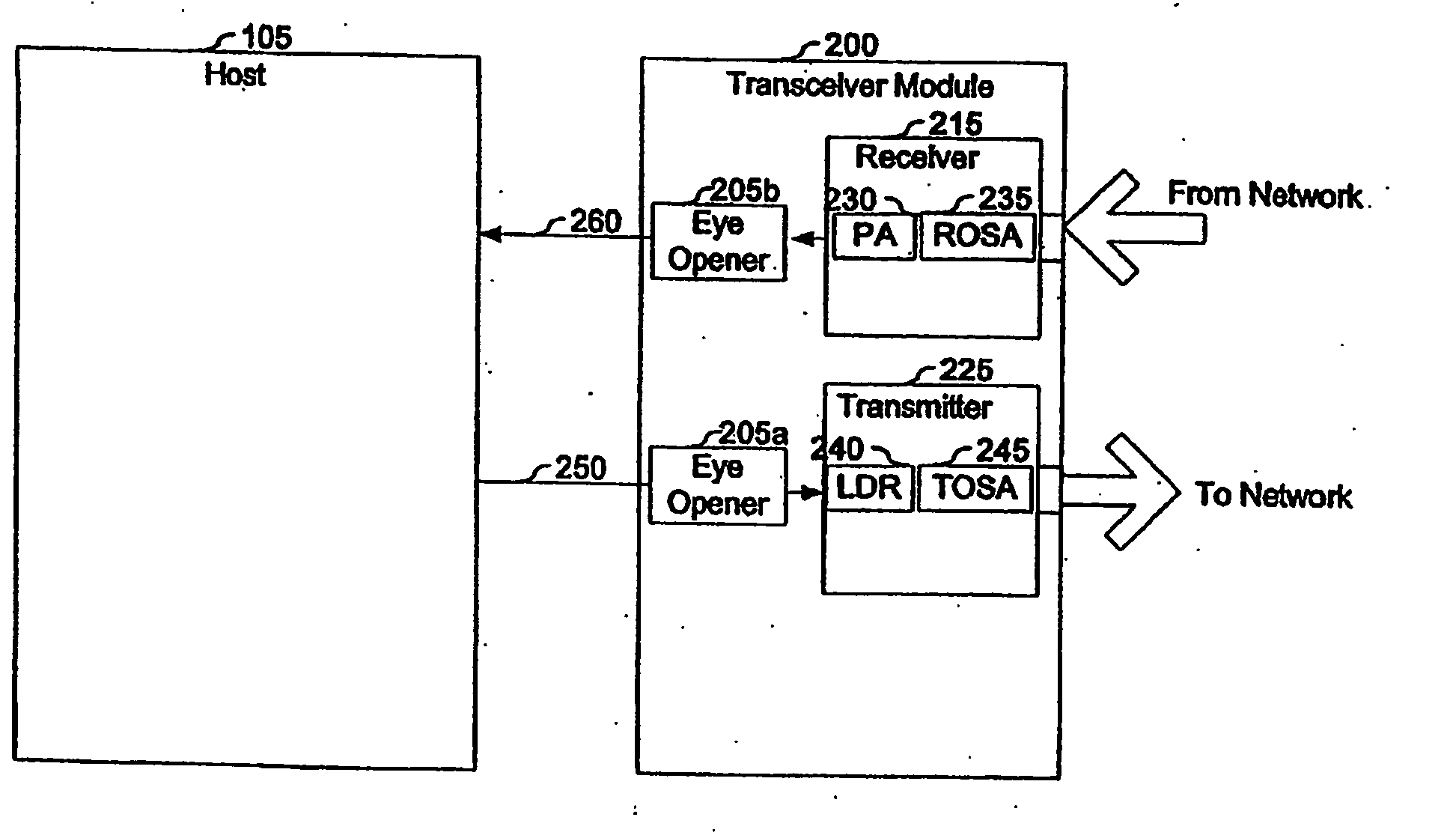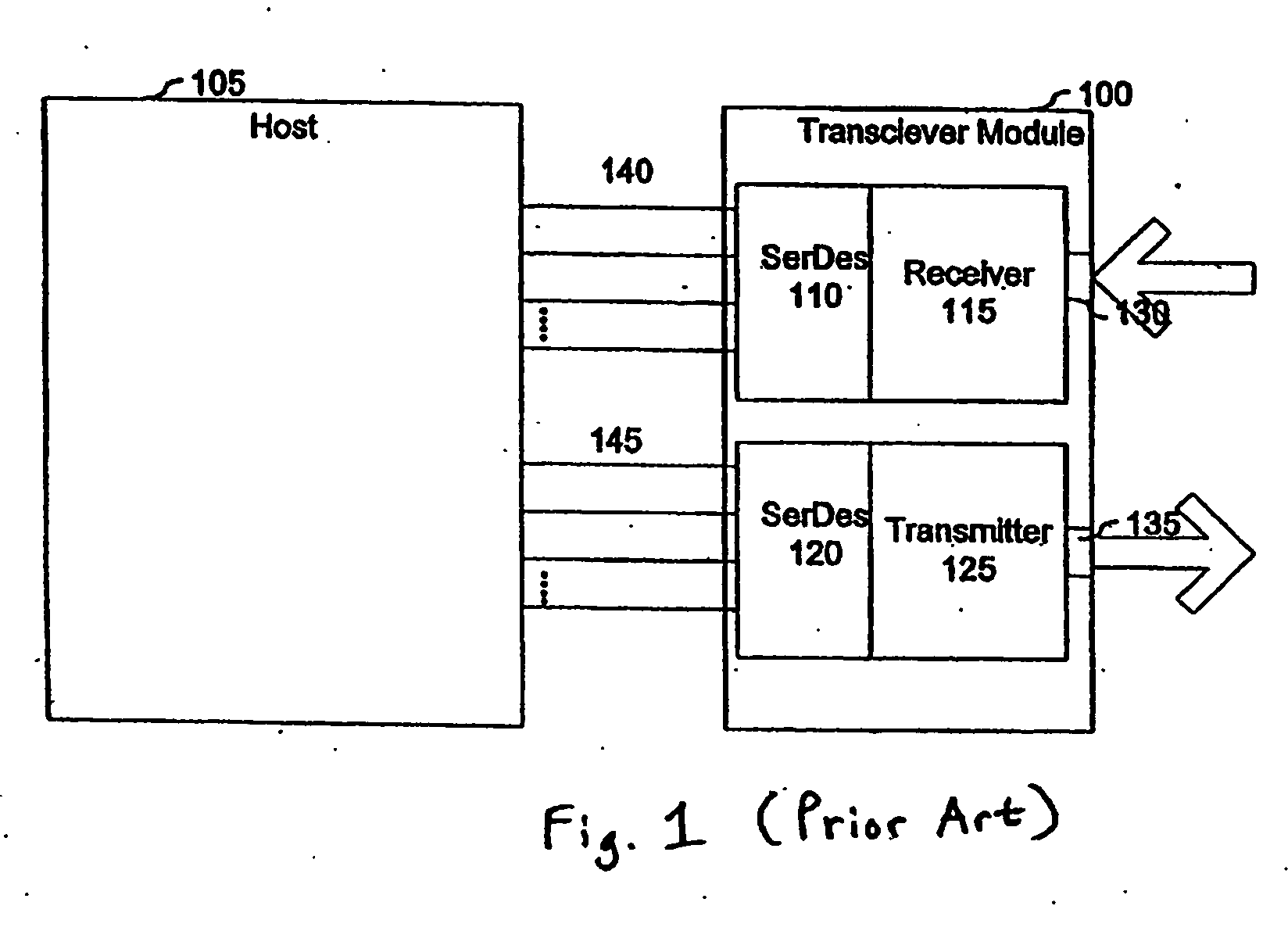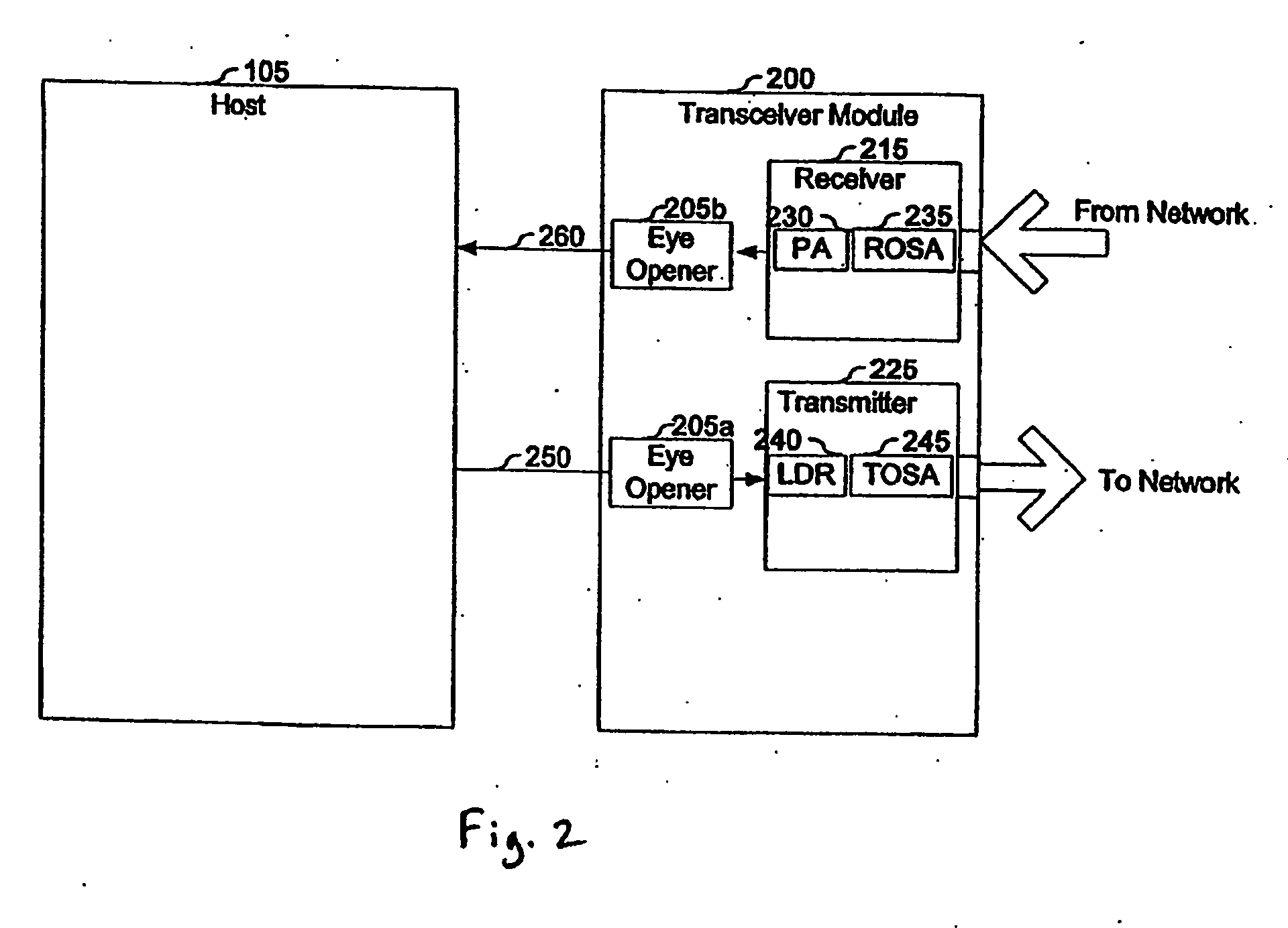XFP transceiver with 8.5G CDR bypass
- Summary
- Abstract
- Description
- Claims
- Application Information
AI Technical Summary
Benefits of technology
Problems solved by technology
Method used
Image
Examples
first embodiment
[0104]FIG. 21A illustrates an eye opener having an equalizer. The data path of eye opener 2100 comprises an equalizer 2120, which receives data from a buffer 2105a and outputs data to a buffer 2105b. The buffer 2105a receives data from a receiver and the buffer 2105b sends data to a host. In another embodiment, the buffer 2105a receives data from the host and the buffer 2105b sends data to a transmitter. In one embodiment the eye opener 2100 conditions a signal in bypass mode.
[0105] The equalizer 2120 resets the data path's jitter budget by reshaping and retiming the data to remove channel noise from sources such as inter-symbol interference. The equalizer 2120 is coupled to receive signals representing coefficients from a coefficient module 2110 and a clock signal from a CDR 2130. The equalizer 2120 is preferably an adaptive equalizer that adapts to channel conditions such as changing temperature, but in other embodiments, the equalizer 2120 may be a passive equalizer. Other embodi...
second embodiment
[0108]FIG. 21B illustrates an eye opener having an equalizer. In this embodiment, the data path of eye opener 2180 comprises an equalizer 2150 in series with a CDR 2160 coupled with an RT 2170. The equalizer 2150 receives data from the buffer 2155a and the RT 2170 outputs data to the buffer 2155b. The CDR 2160 and equalizer 2150 may be disposed on separate chips or an integrated circuit. One advantage of this embodiment, is that the signal is conditioned by both the equalizer 2150 and CDR 2160, leading to a lower bit error rate.
[0109] In contrast to the embodiment of FIG. 21A, the equalizer 2150 preferably reshapes and outputs an analog signal by removing channel effects. The equalizer 2150 receives a clock signal from the CDR 2160 to clock the equalizer's digital components.
[0110] The CDR 2160 and RT 2170 retime and reshape the equalized data. The RT 2170 receives a clock signal recovered by the CDR 2160. The CDR 2160 and RT 2170 may comprise the variations discussed herein.
[0111...
PUM
 Login to View More
Login to View More Abstract
Description
Claims
Application Information
 Login to View More
Login to View More - R&D
- Intellectual Property
- Life Sciences
- Materials
- Tech Scout
- Unparalleled Data Quality
- Higher Quality Content
- 60% Fewer Hallucinations
Browse by: Latest US Patents, China's latest patents, Technical Efficacy Thesaurus, Application Domain, Technology Topic, Popular Technical Reports.
© 2025 PatSnap. All rights reserved.Legal|Privacy policy|Modern Slavery Act Transparency Statement|Sitemap|About US| Contact US: help@patsnap.com



